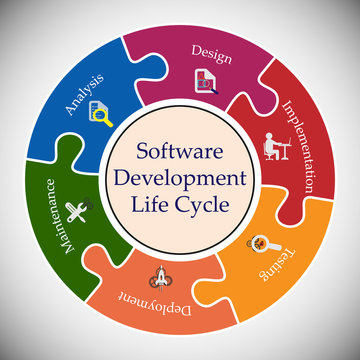
A Comprehensive Overview of the Software Development Phases
Introduction
The world of software development is a complex yet fascinating field. It involves numerous steps, each critical to the success of the final product. A software development company must navigate through these steps efficiently to deliver effective solutions. In this blog, we’ll delve into the intricacies of the Software Development Life Cycle (SDLC), providing a comprehensive guide to its phases. This knowledge is not only crucial for those in the industry but also for clients who seek to understand the journey of their projects.
Conceptualization and Planning
In the initial phase, a software development company defines the project’s scope and goals. This involves identifying the needs of stakeholders and setting realistic objectives. Efficient resource allocation and budgeting are key at this stage, as well as establishing robust risk assessment and mitigation strategies. These early decisions pave the way for a smooth SDLC process, ensuring that the project is on a solid foundation.
Requirements Analysis
This phase focuses on gathering detailed requirements from stakeholders. It’s essential for the software development company to meticulously analyze and document these requirements. The goal is to establish clear and measurable success criteria, which will guide the development process. This stage is fundamental in aligning the project’s objectives with the client’s expectations and laying down a blueprint for the upcoming stages.
Design and Prototyping
Next, the focus shifts to the architectural and system design. Choosing the right technology stack is crucial for future scalability and maintainability. The software development company often creates prototypes for key features, allowing for early testing and feedback. This phase ensures the technical feasibility of the project and sets a clear design path for developers.
Software Development
During this phase, the actual coding and implementation of the software take place. Developers adhere to coding standards and best practices, ensuring the code is clean, efficient, and secure. This stage is where the software begins to take shape, with functionalities being implemented as per the design laid out in the previous phases.
Testing and Quality Assurance
Testing is an integral part of the SDLC. The software undergoes various types of testing like unit, integration, system, and acceptance testing. This phase helps in bug tracking and resolution, ensuring that the software meets the set quality standards and requirements. A software development company must rigorously test the product to guarantee its reliability and performance.
Deployment
Deploying the software involves strategies for its release in different environments such as development, staging, and production. This phase can present challenges, and it’s critical for the software development company to manage them effectively to ensure a smooth launch.
Maintenance and Updates
Post-deployment, the focus shifts to ongoing maintenance and support. The software development company works on implementing updates, new features, and monitoring performance. Continuous feedback from users is crucial during this phase to ensure the software remains relevant and efficient.
Conclusion
This blog has provided a detailed overview of the various phases of the software development process. Each phase plays a vital role in delivering a successful software product. Adhering to these phases ensures that a software development company can meet client expectations and deliver high-quality software solutions.


